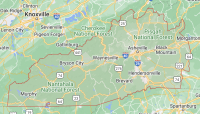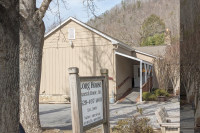Observing the outside world with inward eyes
 Looking back I can remember that 1975
Looking back I can remember that 1975
was a wildflower sort of year.
1980 was a tree sort of year.
1984 was a bird sort of year.
1989 was a mushroom sort of year.
1999 was a fern sort of year.
The summer of 2015 was a butterfly sort of summer. The shrubs and wild flowers in our yard and along the creek that borders the far side of the yard were alive with butterflies all summer long and into fall: Appalachian azure, silvery checkerspot, gray comma, pearl crescent, dreamy duskywing, frosted elfin, mourning cloak, silver-spotted skipper, tiger swallowtail, West Virginia white, hoary edge, and more.
Why? Well, it seemed that way because those were the years when I concentrated on learning wildflowers, birds, mushrooms, ferns and butterflies. I was on the lookout for each and I really paid attention when I located them. It sometimes seemed as if I could will them into existence if I concentrated just right and maintained an uncluttered mind.
If you and I were out walking tomorrow and you said, “George, there’s a cloudless sulphur butterfly over there,” I would be all eyes. Everywhere I look these days I see butterflies because I’ve just started paying attention to them and I‘ve already (sort of like an athlete preparing for an event) visualized what they look like and where I’m likely to encounter them.
The 19th century American naturalist John Burroughs (1837-1921) touched upon this matter in “Sharp Eyes,” an essay published by Houghton Mifflin in 1907 as part of a collection titled Birds and Bees: Sharp Eyes and Other Papers (http://onlinebooks.library.upenn.edu/webbin/gutbook/lookup?num=3163):
“Noting how one eye seconds and reinforces the other, I have often amused myself by wondering what the effect would be if one could go on opening eye after eye to the number, say, of a dozen or more … At any rate some persons seem to have opened more eyes than others, they see with such force and distinctness; their vision penetrates the tangle and obscurity where that of others fails like a spent or impotent bullet. How many eyes did Gilbert White open? … how many did Henry Thoreau? … how many did Audubon? … how many does the hunter, matching his sight against the keen and alert sense of a deer or a moose, or a fox or a wolf? Not outward eyes, but inward. We open another eye whenever we see beyond the first general features or outlines of things — whenever we grasp the special details and characteristic markings that this mask covers … You must have the bird in your heart before you can find it in the bush. The eye must have purpose and aim. No one ever yet found the walking fern who did not have the walking fern in his mind. A person whose eye is full of Indian relics picks them up in every field he walks through.”
Related Items
If you and I were out walking tomorrow and you said, “George, there’s a female rose-breasted grosbeak or a bottle gentian or milky mushroom or rattlesnake grape fern, I would look but I might have some difficulty seeing them the way I once did when they were new to my experience.
We are, after all, as they say, downsizing ... old field guides, backcountry maps, fishing gear, running shoes, pressed plants, you name it, are being pared down. We can’t throw them out the window without raising a ruckus, so we haul them off to the nearest thrift shop sponsored by an animal shelter, the homeland of discarded enthusiasms.
If we’re not careful we’ll downsize ourselves right out of our hard-earned sense of wonder. How do we go about making sure we continue seeing the world about us with fresh eyes even though we don’t care to adopt new enthusiasms?
One way to do so might be to return to and re-energize the old ones. Re-visit the secluded nook where you first located yellow lady’s slipper or walking fern or glade spurge. Go back up into the Alarka Laurel, which you first visited 40-some years ago when the kids were still kids. See if there are red crossbills at Clingmans Dome this winter. Keep searching for the elusive black-billed cuckoos and olive-sided flycatchers. Re-read Bartram’s Travels.
And so on. I need not go on. You know what I’m talking about. You don’t have to reinvent your self … just recycle your self.
(George Ellison is a naturalist and writer. He can be reached at This email address is being protected from spambots. You need JavaScript enabled to view it..)









